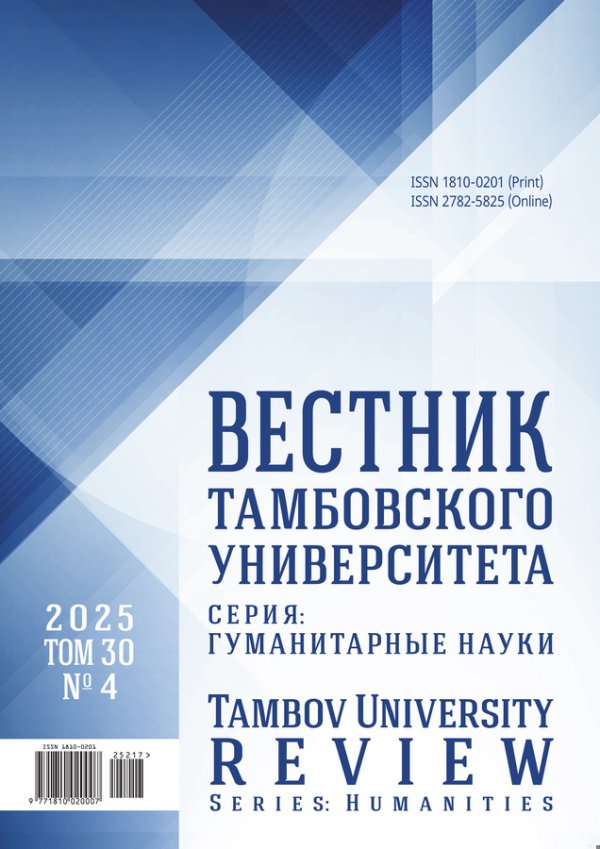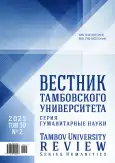Формирование символического капитала памятника археологии «Аркаим»: историческая ретроспектива
- Авторы: Симакова С.И.1
-
Учреждения:
- ФГБОУ ВО «Челябинский государственный университет»
- Выпуск: Том 30, № 2 (2025)
- Страницы: 527-540
- Раздел: ОТЕЧЕСТВЕННАЯ ИСТОРИЯ
- URL: https://ogarev-online.ru/1810-0201/article/view/298969
- DOI: https://doi.org/10.20310/1810-0201-2025-30-2-527-540
- ID: 298969
Цитировать
Полный текст
Аннотация
Актуальность. Многогранный, сложный образ Аркаима, который включает в себя археологический, исторический, мистический, туристический аспекты, формировался на протяжении более 37 лет. С 1987 г. по настоящее время археологический памятник привлекает внимание средств массовой коммуникации, научных исследователей, представителей власти. Цель исследования – рассмотреть образ Аркаима как элемент символического капитала Челябинской области в текстах средств массовой коммуникации, начиная с 1987 г. по настоящее время, в исторической перспективе и с точки зрения эволюции средств массовой коммуникации.Материалы и методы. Рассмотрена эволюция образа Аркаима в текстах средств массовой коммуникации в исторической перспективе и с точки зрения их эволюции. Были проанализированы материалы средств массовой информации, начиная с 1987 г., в общем объеме более 1000 единиц и результаты анкетирования посетителей музея-заповедника, проведенного в 2023 и 2024 гг. Основными методами исследования выступили сравнительно-исторический метод, тематический анализ и опрос.Результаты исследования. Для удобства рассмотрения материал разделен на три периода: 1) 1987–1997 гг., когда велась борьба за спасение археологического памятника от затопления и строился его образ, именно в этот период вокруг Аркаима складываются мистические и антинаучные мифы; 2) 1997–2007 гг., когда велся поиск идентичности Аркаима; 3) 2007 г. – настоящее время, когда Аркаим функционирует в рамках туристического центра, привлекающего внимание как любителей научного туризма, мистических и духовных практик, ученых-исследователей, так и представителей власти. Исторически данные периоды соответствуют переломным моментам в истории России, рассмотрено, как именно исторический фон повлиял на складывание образа Аркаима. С точки зрения развития средств массовой коммуникации выделенные периоды соответствуют расцвету «традиционных» СМИ (теле-, радио- и печатные СМИ), во втором периоде им на смену приходят интернет-СМИ, а в третьем периоде их сменяют социальные медиа. В результате кардинальной смены вида и формы коммуникации меняется и формат развития образа Аркаима как элемента символического капитала Челябинской области.Выводы. Формирование символического капитала Аркаима прошло три ключевых этапа, отражающих как исторические трансформации в России, так и эволюцию медиа – от борьбы за сохранение памятника до его мифологизации и современного позиционирования как туристического и духовного центра. Выявлен дисбаланс между официальным научно-историческим образом Аркаима в СМИ и его восприятием аудиторией как «места силы», что требует гибридных медиастратегий, сочетающих фактологию и культурные смыслы. Аркаим обладает потенциалом для включения в национальную идею России, однако его дальнейшее развитие зависит от согласования научного, духовного и туристического дискурсов при сохранении аутентичности.
Об авторах
С. И. Симакова
ФГБОУ ВО «Челябинский государственный университет»
Автор, ответственный за переписку.
Email: simakovi@mail.ru
ORCID iD: 0000-0001-5248-9459
доктор филологических наук, профессор кафедры медиапроизводства
454001, Российская Федерация, г. Челябинск, ул. Братьев Кашириных, 129Список литературы
- Киршин Б.Н. Аркаим: актуальные смыслы для региональной и глобальной повестки // Челябинский гуманитарий. 2021. № 3 (56). С. 7-11. https://doi.org/10.47475/1999-5407-2021-10301, https://elibrary.ru/nwqpos
- Зубанова Л.Б. Археологический памятник Аркаим: символическое значение и социокультурные практики освоения // Новые тенденции в системе современного культурологического образования как основы мировоззренческой подготовки: материалы Междунар. науч.-практ. конф. Екатеринбург, 2024. С. 284-290. https://elibrary.ru/qfrekd
- Шевченко В.С., Рукавишникова У.В., Медведева А.А. Формирование практико-ориентированных компетенций по связям с общественностью как элемент системы подготовки специалиста в высшем учебном заведении // Челябинский гуманитарий. 2023. № 3 (64). С. 108-116. https://doi.org/10.47475/1999-5407-2023-64-3-108-116, https://elibrary.ru/suaxie
- Зданович Д.Г. Аркаим: древность, модерн, постмодерн // Аркаим. 1987–1997: Библиографический указатель / сост. Д.Г. Зданович, Е.И. Коган, Н.Н. Орлова. Челябинск, 1999. С. 8-46.
- Аркаим. 1987–1997 / сост. Д.Г. Зданович, Е.И. Коган, Н.Н. Орлова. Челябинск, 1999. 120 с. https://elibrary.ru/vuxwpn
- Куприянова Е.В. Изменения приоритетов в освещении археологических памятников в СМИ с начала 1990-х годов до современности (на примере поселения Аркаим в Челябинской области) // Пользовательский контент в современной коммуникации: сб. материалов 1 Междунар. науч.-практ. конф. Челябинск, 2021. С. 370-373. https://elibrary.ru/xdctqe
- Аркаим в прессе Южного Урала. 1973–1987–2006 / сост. В.А. Волгин. Челябинск: Крокус, 2007. 118 с. https://elibrary.ru/qvnslf
- Шевченко В.С. Стимулирование комментирования как коммуникативная технология (на примере медиагруппы «Наш Челябинск») // Коммуникация в современном мире: материалы Междунар. науч.- практ. конф. исследователей и преподавателей журналистики, рекламы и связей с общественностью: в 2 ч. Воронеж, 2023. Ч. 2. С. 86-88. https://elibrary.ru/wfwlia
- Филиппов Д.Е., Минибаева А.О. Подходы к изданию печатного СМИ как элемента корпоративной культуры архивов: сравнительный анализ // Медиасреда. 2022. № 2. С. 57-61. https://doi.org/10.47475/2070-0717-2022-10212, https://elibrary.ru/zswosg
- Шевченко В.С. Специфика интеграции сайта и социальных сетей в условиях панмедиатизации // Медиасреда. 2023. № 1. С. 24-27. https://doi.org/10.47475/2070-0717-2023-10105, https://elibrary.ru/evcppe
- Загидуллина М.В. Панмедиатизация: закат вербальной коммуникации. Челябинск, 2019. 225 с. https://elibrary.ru/rcncap
- Киселев Д.Г. Популяризация археологии средствами теледокументалистики (на примере фильма Жана-Мишеля Готро «Аркаим») // Magistra Vitae: электронный журнал по историческим наукам и археологии. 2024. Т. 9. № 3. С. 77-82. https://doi.org/10.47475/2542-0275-2024-9-3-77-82, https://elibrary.ru/ksmvqo
- Панюкова С.А. Репрезентация археологического памятника в медиа в рамках институализированного аккаунта // Magistra Vitae: электронный журнал по историческим наукам и археологии. 2024. Т. 9. № 4. С. 32-138. https://doi.org/10.47475/2542-0275-2024-9-4-132-138, https://elibrary.ru/ciseso
- Медведева А.Р. Динамика репрезентации Аркаима через тематический компонент в интернет-СМИ (2022–2023) // Знак: проблемное поле медиаобразования. 2024. № 1 (51). С. 97-102. https://doi.org/10.47475/2070-0695-2024-51-1-97-102, https://elibrary.ru/iftibe.
Дополнительные файлы










